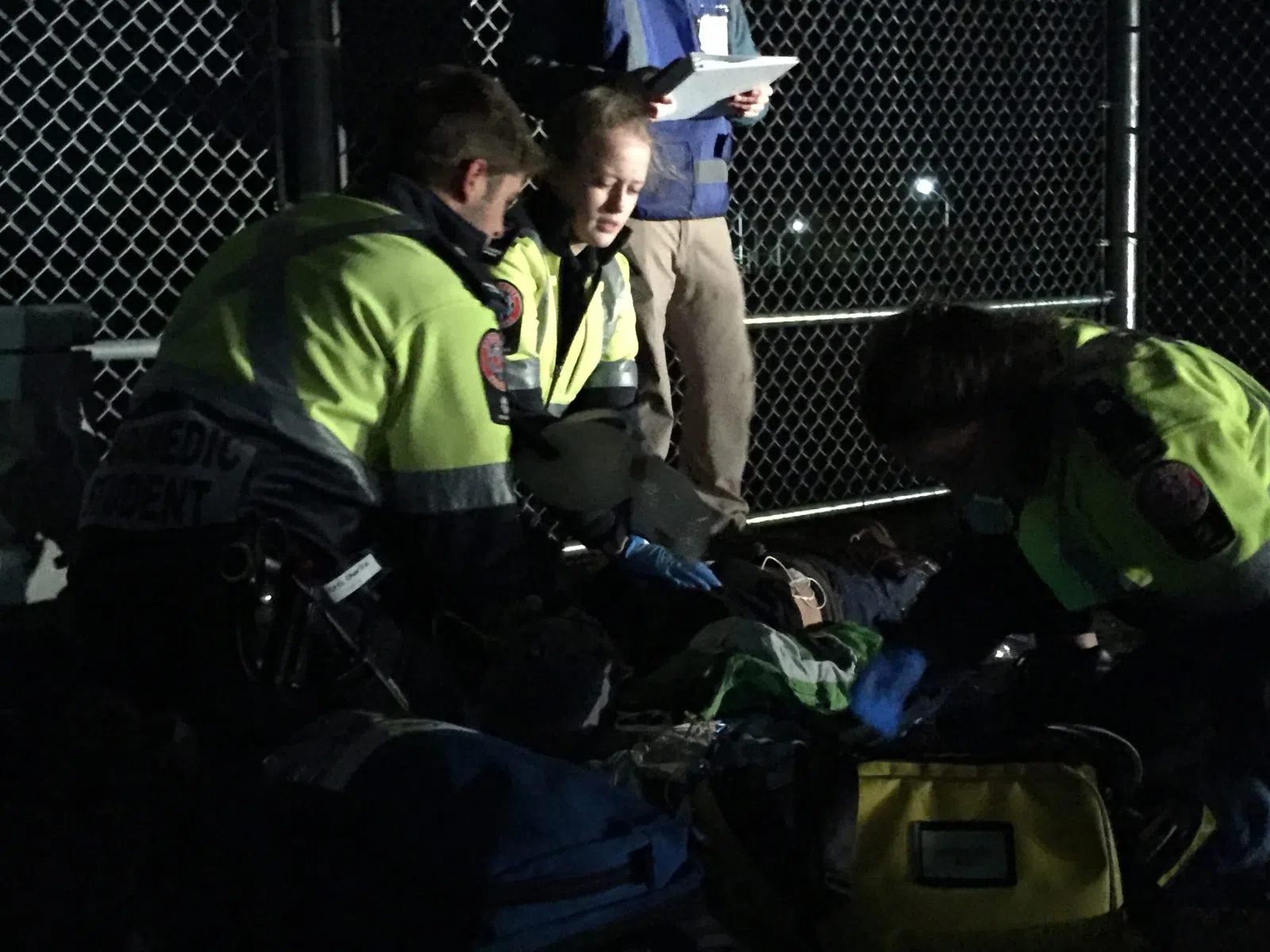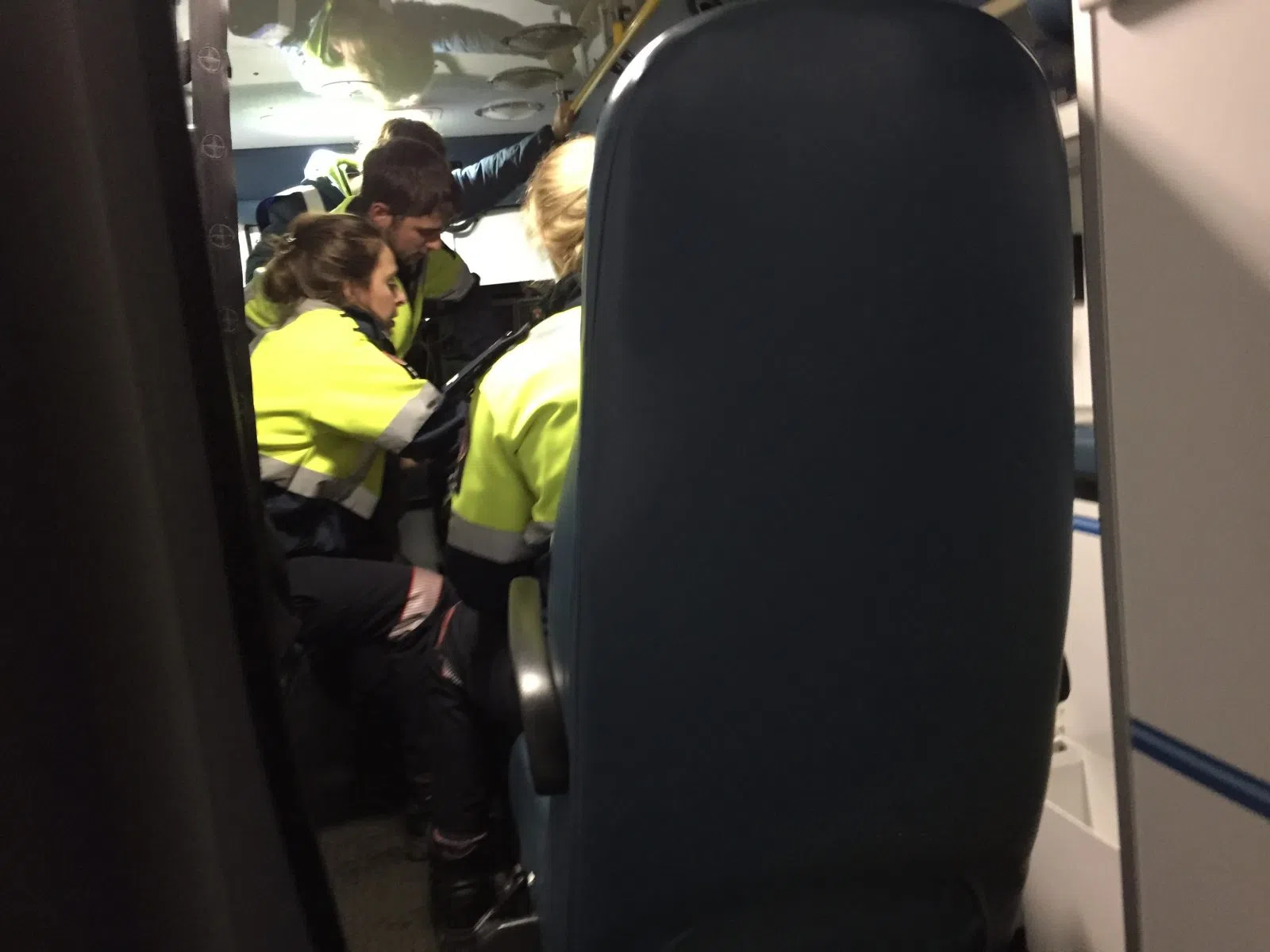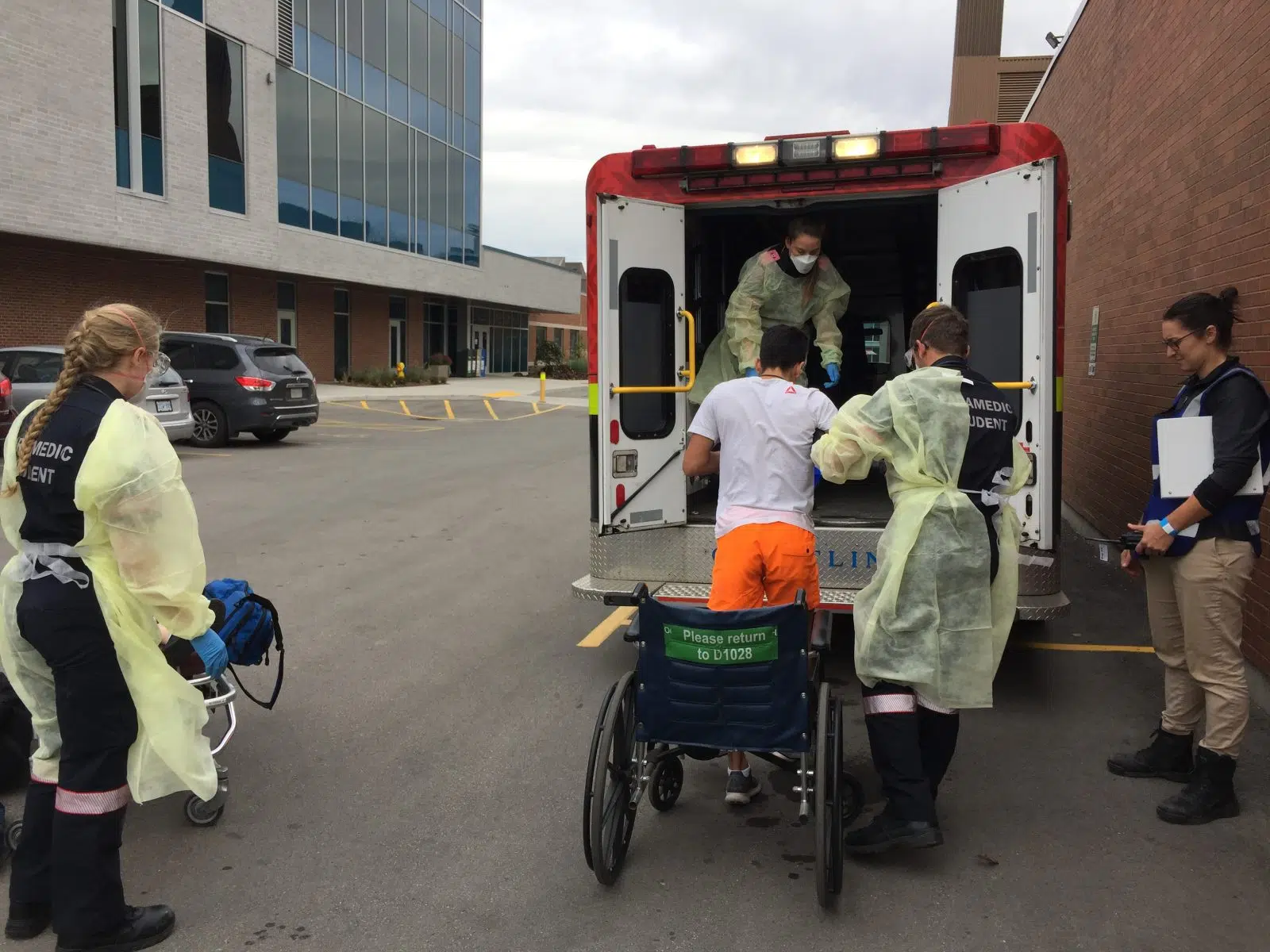Over the past weekend you may have noticed a blur of flashing lights and rushing paramedics. You may have also been surprised by a group of screaming blood and vomit covered people attending a wedding party in the middle of Fanshawe.
No it was not a haunted house gone wrong but a simulation for some of fanshawe’s emergency response programs.
This year things were back to basics but that didn’t stop the organizers from layering realistic details in each of the scenarios that unwitting students were forced to respond to. Make up artists spared no expenses in creating ‘moulage’ for the event. What’s usually a vehicle bay in C building was turned into an impromptu dressing room for actors receiving gruesome fake injuries.
The practical reason behind this is to create the most shocking and realistic scenes for Fanshawe’s paramedic students.
The program is one of the best in the country and prepares would be paramedics for a oftentimes unnerving career. When we think of the special individuals dashing out the back of an ambulance at a car accident or scooping up people from broken scenes we don’t often question what kind of preparation it takes to get to this point.

Center stage as students attempt to save a patient found with their life hanging in the balance.
Most young paramedics leave the profession after one to two years on the job. This is almost entirely due to overexposure to traumatic incidents and post traumatic stress. What the exercise hopes to do is prepare students for the worst case scenario, and hopefully what to do to protect yourself from permanent mental scars.
For evaporators and professors creating the scenes they pull on their own experience to develop different calls. Professors like Chris Slabon who have spent most of their adult lives working in the field they know the importance of being able to develop skills that allow you to focus on the call.
Alongside their regular education students are put on placement with local first responders here in London or the surrounding area.
But if things go to far or a call that a student is apart of gets out of control, students will be brought back in to debrief and undergo mental health checks to talk about what they may have experienced.
That’s what these exercises are all about.
Communication is king in the world of a first responder. Conveying as much information about a situation to the rest of the team your out with, not just increases the likelihood of a injured patients survival. This space creates an open space for paramedics to talk about some of the things they see on call.
An open space shannon a second year paramedic student says is created on day one. The sense of camaraderie in the group of students is the the first thing that strikes you about them. The constant how are you’s and what are you thinking is a striking quality that you rarely see in communications circles or even amongst a group of best friends.

Paramedic students simulate chest compression’s on patient in critical condition.
These exercises put all of these aspects under the microscope. Although students aren’t being evaluated on every single scene they take into consideration their performance on each call. This was an important weekend for students hoping to apply their learning to real world situations but also a weekend of personal growth and reflection on the very serious career these young people will be undertaking.





